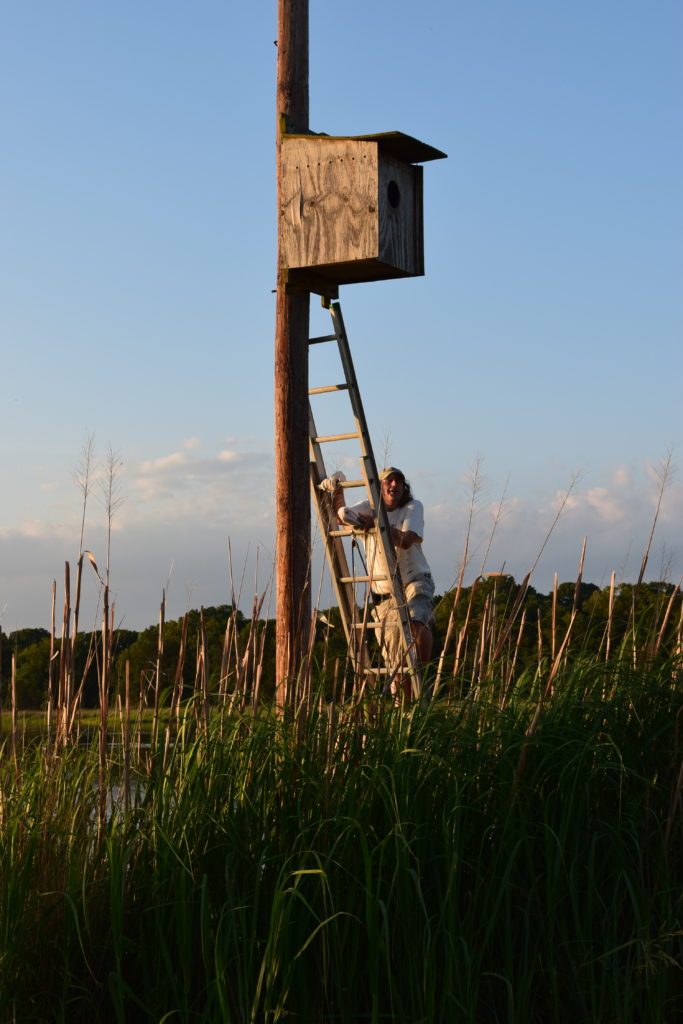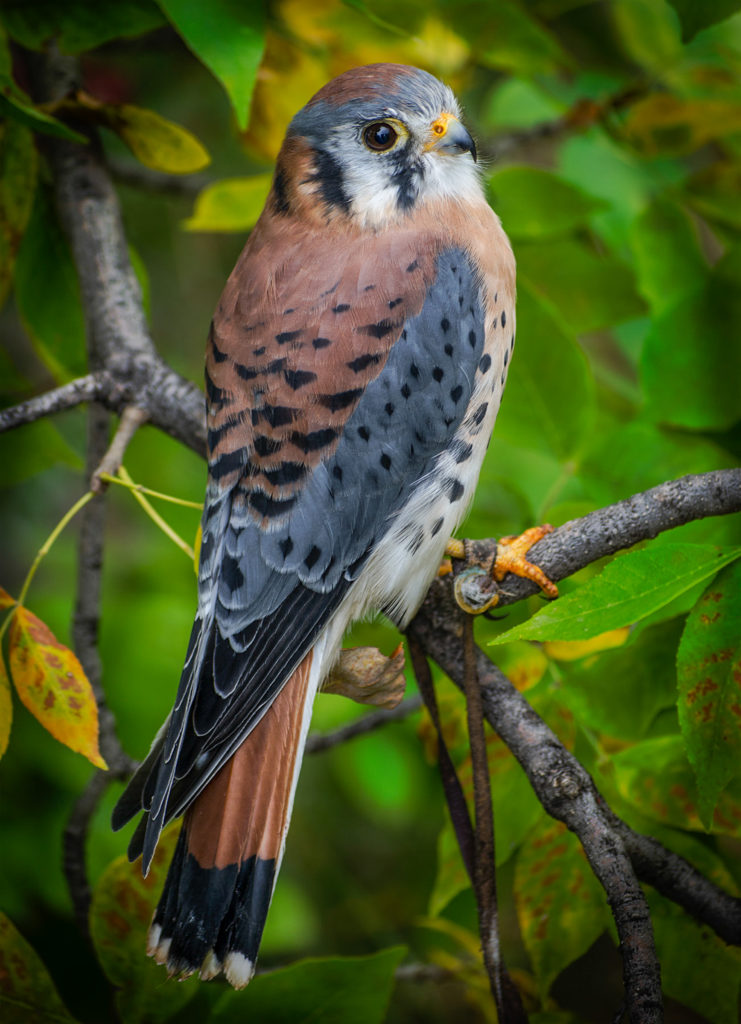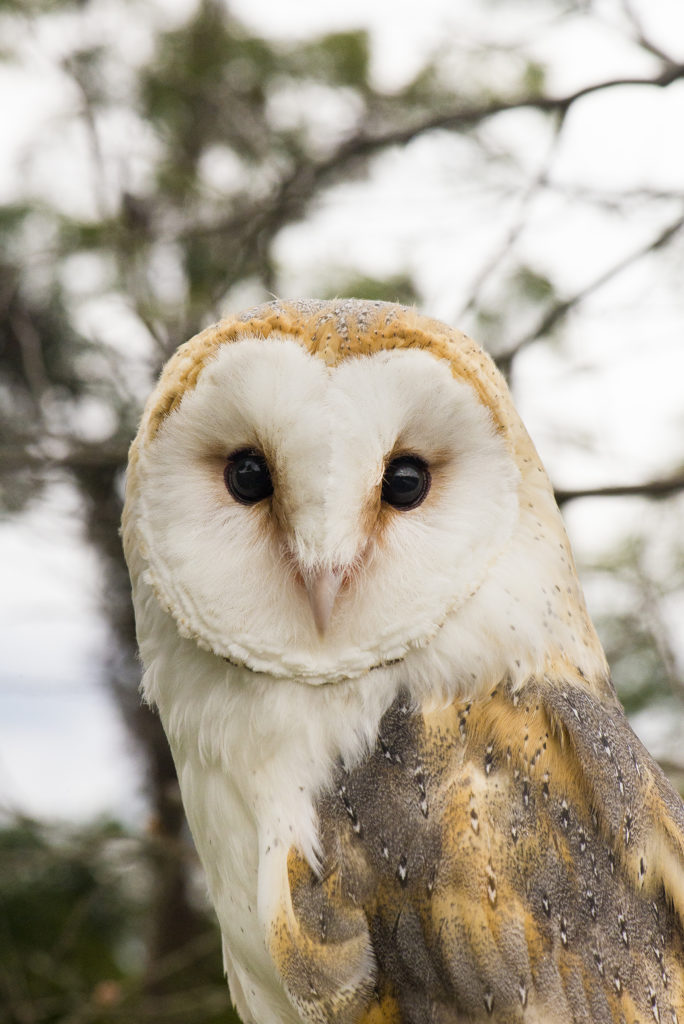Have you ever seen or heard an owl in the wild? The excitement is something you will never forget! Come out and join us to see native hawks and owls close up.
The Raptor Conservation team helps protect and study birds of prey in Southern Maryland. We mainly work with American Kestrels, Barn Owls, and Ospreys. And we need you to care about these birds, too!
Contact Raptor Conservation.
Volunteer Opportunities
Come out and volunteer with us! It is the best way to see these charismatic birds up close. Here is a little information about the birds and how you can help.
The Osprey, once at risk from the pesticide DDT, is now a fairly common raptor in our area. It has recovered partly because that pesticide was banned, but also because scientists and concerned citizens have put up nesting platforms to make up for losses in suitable nesting spots. Our volunteers help monitor Osprey nest platforms and document chicks.
Unfortunately American Kestrels and Barn Owls are still at risk. Grasslands and meadows are the fastest disappearing habitats. Because both rely on grasslands, their numbers have drastically declined. But our projects can and do make a difference. Nest boxes can mimic the disappearing sites they need to lay eggs and raise their young. As a volunteer nest box monitor, you could discover a pair of these rare raptors nesting with chicks! Each successful brood is a victory for the species. And it is a research opportunity. By tagging owlets with metal bands, we might one day learn where they traveled and how long they lived.

Educational Programs
In the winter, we host “Owl Prowls” at night, when we trek near fields and try to call in the birds. It’s an exciting chance to meet the owls on their home turf! If nesting is successful, we also offer educational programs in the spring. When owlets get big enough, usually in May or June, a licensed scientist affixes bands on their legs and documents the birds. This popular family event allows participants to get their pictures taken with young Barn Owls!

Help Raptors Where You Live and Work
Do you want to help these raptors at your home or business? We sometimes give advice to property owners and managers on how to improve habitat for these disappearing raptors. For example, we sometimes help set up a new Osprey nest platform if a pole to support it has already been installed.
Community Service Projects
Do you want to help these birds of prey with a community service project? We assist with that, too. For example, we can provide the right plans for building American Kestrel and Barn Owl nest boxes. Then we contact property owners with the correct habitat to ask if they will host a nest box. Over the years we have helped several Girl Scouts and Boy Scouts with such projects.

Citizen Science and Our Partners
Many of these activities allow people of all ages to be actively involved in community science. In community science, everyday people carry out hands-on scientific investigation, making science fun. By getting involved, individuals and families can experience wildlife first hand and get a taste of what it is like to be a wildlife biologist or natural resources manager. Some of our student volunteers have even gone on to work in the field of wildlife!
We cannot possibly do these important projects alone, so we strive to get many people involved. We partner with SMECO, the Wicomico River Valley Foundation of Southern Maryland, local businesses, and others. Once a year, we recognize volunteers who go the extra mile with our Raptor Conservation Award. Those who come to our programs pay a small fee, and folks who Adopt-a-Raptor are also valuable supporters. Those funds help us pay for supplies and nest boxes. Thanks to all of them—and to you! Please join us and experience the magic of raptors for yourself.
About Raptors
American Kestrel

The American kestrel is our smallest falcon and has a low breeding population in Southern Maryland. A fierce little raptor, the American Kestrel hunts insects, small reptiles, birds, and mammals in grasslands, a dwindling habitat. It also needs a cavity to nest in. Because people often fell dead trees, nest boxes can help mimic a natural nesting cavity.
Barn Owl

The Barn Owl is a medium sized owl, and the Maryland Department of Natural Resources rates it as “in need of conservation.” They often hunt in fields and marshes for small mammals and birds. Barn Owls got their name because they often nest in barns—not surprising because farms are often ideal habitat! Sadly, barns and other cavities are in short supply. As with Kestrels, nest boxes can help.
